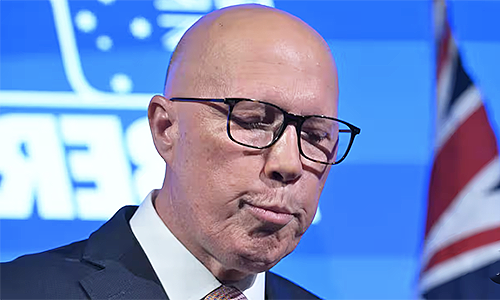
by REX WIDERSTROM – AUSTRALIANS have comprehensively rejected the soppy centre-Left agenda embraced by Liberal leader Peter Dutton, re-electing Labor with an increased majority.
In a result that mirrors the recent Canadian election, Australia’s so-called centre-Right Coalition lost the May 3 federal election, and its leader Peter Dutton lost his own seat.
- ALP projected to win 86 seats, up from the 77 it held at the previous election.
- The national swing toward the ALP was at least 4 per cent.
- The Liberal Party now faces several terms in the political wilderness.
With more than 80 per cent of first preference votes counted, the ALP, which had endured declining popularity over the past year, is leading in 77 electorates and narrowly ahead in another four.
The Liberal-National Coalition leads in just 29 and is running a close race in another 10. Independents are ahead in nine, and may take one more.
FIRST
For Australia, this will be the first time a prime minister has won a second term since 1998.
All 151 seats in the House of Representatives were on the line, and 40 of 76 Senate seats.
Widely predicted to be a tightly contested race, with cost-of-living pressures, affordable housing, and energy policy dominating the campaign, the ALP managed to turn around its fortunes in the last few months.
The ALP is projected to win 86 seats in total, up from the 77 it held at the previous election. To form government a Party needs to win 76 seats.
The Coalition will be cut from 58 seats to just 40, and another 10 will go to independents (including the “Teals”), and none to the Greens.
Labor also held all of its marginals, while winning most of the marginal seats previously held by the Coalition: Deakin, Bennelong, Sturt, Bass, Banks, Leichhardt, and Petrie.
The scale of the victory is illustrated by the seat of Bennelong, once a blue-ribbon Liberal stronghold represented by former Prime Minister John Howard.
Redistribution, however, turned it into the most marginal of Labor seats, held until now by Jerome Laxale with a margin of just 0.04 per cent.
But Laxale recorded a huge swing of 10.3 per cent against the Liberal Party’s Scott Yung, turning blue to a deep red despite the Liberal Party pouring huge resources into trying to take the seat.
It’s also evident in Hughes, a seat the Labor Party hasn’t held for almost 30 years. There, the ALP’s David Moncrieff is expected to defeat the 8.9 per cent margin of the Liberals’ Jenny Ware.
Such was the rejection of the opposition that in the traditionally conservative rural heartland seat of Calare, deserting his Party and standing against them – often frowned upon by voters tired of internal politicking – didn’t affect newly minted independent Andrew Gee. He managed to defeat his replacement as Nationals’ candidate, Sam Farraway, with a 23.2 per cent swing.
Results of that magnitude are being repeated across the country, with a national swing toward the ALP of at least 4 per cent.
The only State in which the Coalition has done better than Labor is its stronghold of Queensland, where so far it’s taken 14 seats to the ALP’s 11.
POORLY
It’s done particularly poorly in Victoria, winning just six to Labor’s 22, a critical State where it hoped to pick up a few suburban seats.
The most painful defeat of the Liberal-Nationals, though, must be Dutton’s seat of Dickson, which has gone to the ALP’s Ali France with a 9.3 per cent swing. A situation mirrored in Canada with the defeat of Pierre Poilievre.
Dutton was challenged by a concerted campaign from Labor, but also a Teal independent.
With most people, including pollsters and politicians, predicting a close race, albeit with Labor slightly ahead and likely to form a minority government, the result was unexpected.
While the final results will change once early votes and those from Western Australia are counted, it’s clear Labor will have a majority in Parliament.
And if support for the Party is reflected in voting for the Senate – the results of which may not be known for as long as a month from now – then it may not have to cut deals with independents and minor Parties to pursue its legislative agenda.
The Coalition had polled well over the past year, gaining ground on the Labor government to the point where it was predicted to be a chance to even win minority government – a result that would have been historic because no Party has lost government in just one term since 1931.
From the beginning of this year – and when the election campaign officially began early last month –the Coalition, however, began to falter, particularly with its decision to walk-back several signature policies including a pledge to cut 41,000 public servants, forcing government workers back to the office, and even avoiding overt promotion of its civilian nuclear energy policy.
Many of these decisions came amid media and Labor Party scrutiny, and were also linked to concerted efforts to distance the centre-Right party from the Make American Great Again movement.
In fact, in one instance, Senator Jacinta Price walked-back the comment: “Make Australia Great Again.”
GREENS
The Teal independents, backed by Climate 200, have held their seats, mostly with increased margins, but voters seem to have decided that the Greens aren’t needed in the lower house, losing the seats of Griffith and Brisbane (where their sitting MP came third) though, at the time of writing, ahead in their last remaining seat of Ryan against a 5.91 per cent swing to Labor.
The Party may, however, retain its influence over Labor’s direction if it can hold its 12 Senate seats.
The Teals have been promoted as independent candidates to appeal to affluent, white-collar voters keen for more climate change action, and transparency in government. At the same time, their preferences almost always flow to Labor.
Meanwhile, the suburban independent Dai Le – a former Liberal candidate –appears to have held her seat of Fowler, which had a 1.1 per cent margin, with a 0.3 per cent swing.
The Liberal Party, which is now faced with finding a new leader before Parliament resumes, faces the prospect of several terms in the political wilderness unless it can re-define its platform over the next three years and convince the electorate that it’s a viable alternative government.PC


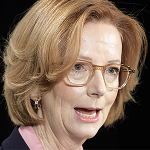

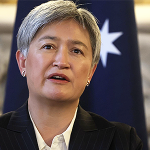
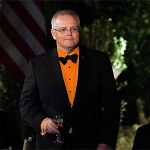
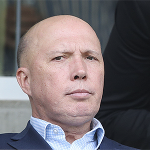




1 thought on “Libs abandon values, base rejects Dutton”